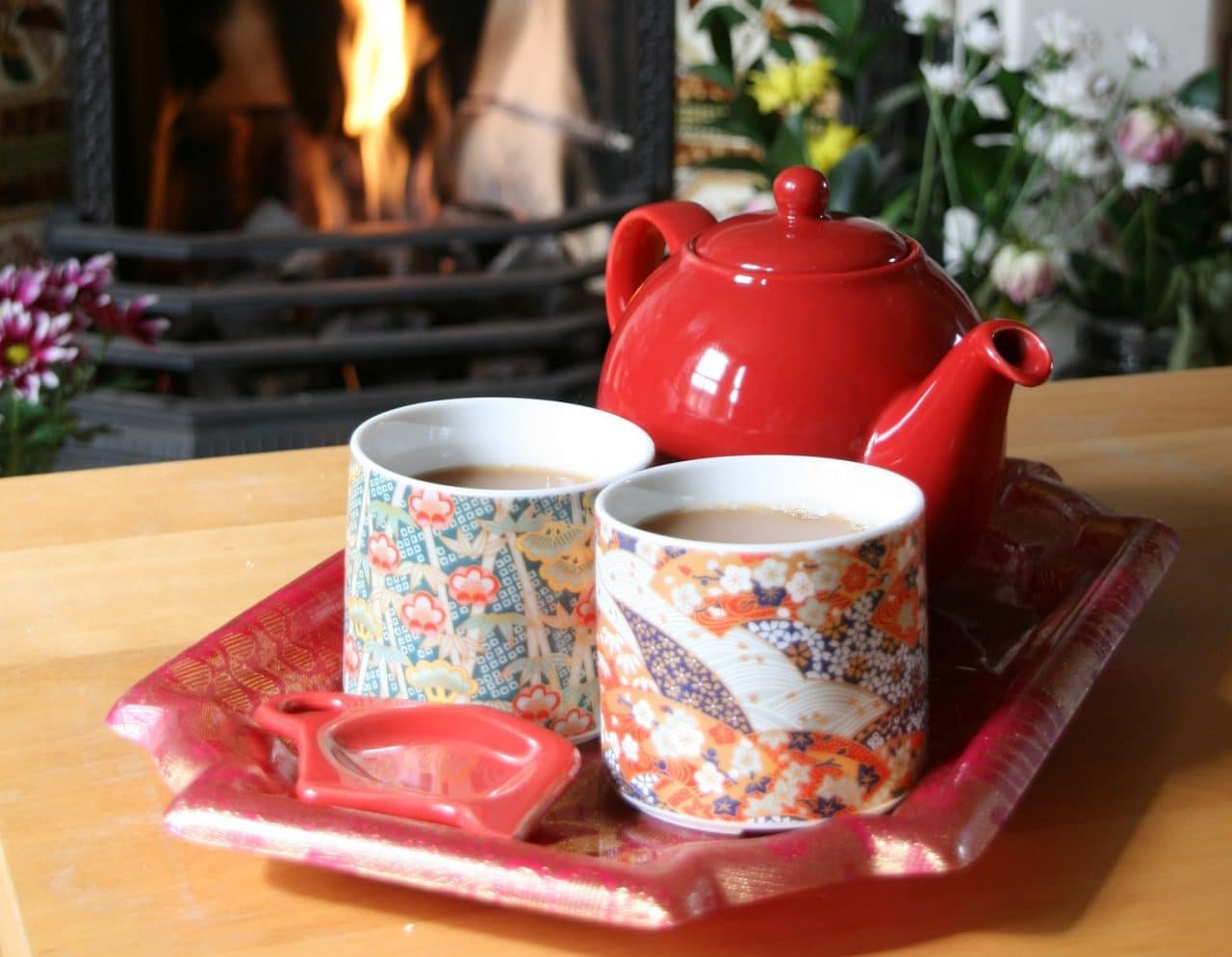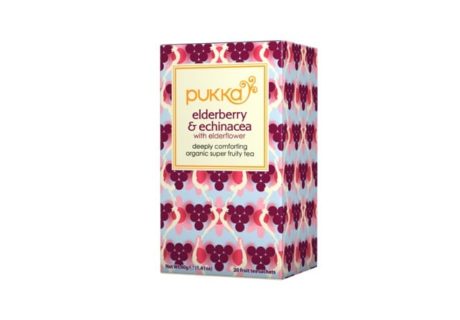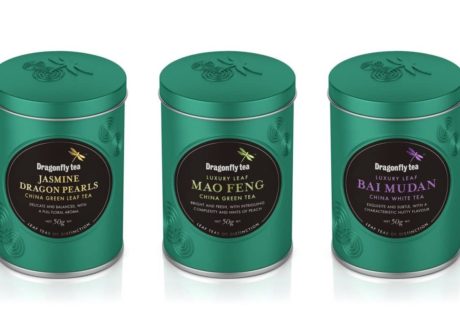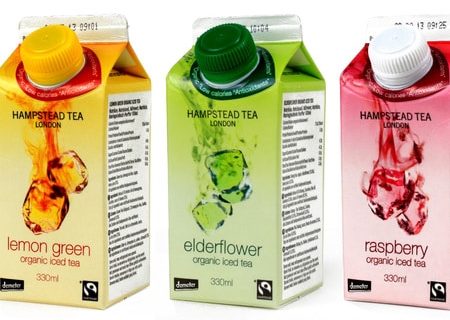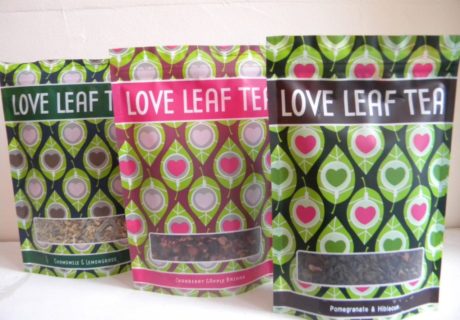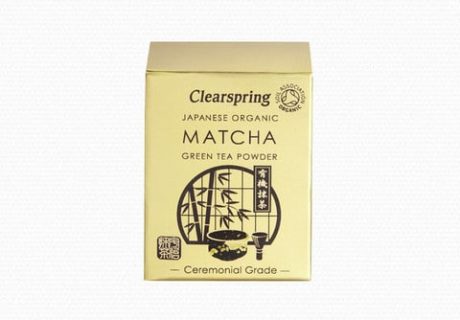Brands are taking consumers on a ‘tea journey’, helping them develop a taste for adventurous blends and top end teas.
Sales of black teas may have been feeling the strain in recent years but the performance of the speciality tea sector has been positively zesty. According to research by Mintel green teas have become the biggest threat to the traditional cup of builder’s, with sales shooting up 83% between 2010 and 2012.
But herbal and fruit teas also grew by around 10% over the same period. Part of this growth has come from an increasing association between herbal and fruit tea ingredients and healthiness. But a growing presence of big name tea brands in the herbal tea category, not forgetting supermarket own label ranges, has also driven up overall sales – and not necessarily to the detriment of independent natural and organic brands.
Door opener
Pukka Herbs co founder Tim Westwell explains: “The major tea brands, even the supermarket ranges, can act as a ‘door opener’ for consumers. What we’re seeing as the market matures is a kind of ‘quality scale’ of basic, middle and high end. This creates a ladder for people to climb. The point of entry for a lot of people will the basic products and ranges, so they actually have an important place.
“People go on a journey with tea. Often they start with the least risk, and as their confidence grows they explore teas with fuller flavours or more adventurous blends. We welcome that because it sets people o the path towards higher quality herbal teas – where health stores still offer nu far the greatest depth of range.
“People go on a journey with tea. Often they start with the least risk, and as their confidence grows they explore teas with fuller flavours or more adventurous blends”
“What we’ve seen is that as this market matures customers are becoming more sophisticated in their requirements – and they’re willing to pay for premium products. At Pukka we’ve always been about innovative, better bends so consumers are coming the brand as they make their journey with tea. More generally, the recession has been positive for the category as a whole – the one thing people have continued to invest in is themselves.”
A new leaf
Karin Ginsberg at Dragonfly Tea says that a growing consumer knowledge of tea is leading to a greater interest in leaf teas. “It’s become very fashionable to hold tea parties and to show off your knowledge of tea. Interest in leaf teas follows in this trend. As people’s understanding of tea grows, then you see an appreciation that the rarer teas, the really top of the market teas, only come from a leaf tea.” This new interest in leaf teas was identified by Mintel which noted that it is younger consumers (the 24-35 age group) who are now the biggest users of leaf teas – a perhaps surprising but encouraging finding.
Responding to the trend, and following on from a successful rebranding of its Rooibos teas earlier in they year, Dragonfly has created a special new artist-designed tin for its artisan Leaf Teas of Distinction range. Comments Ginsberg: “We wanted a visual identity that reflects Dragongly’s connoisseurship. We’re not a chatty brand or an overly serious one, so we aimed to convey confidence in our knowledge of tea. The tin designs have embossed rings of water and our dragonfly motif on the lid. We hope it reflects a sense of purity and harmony, and the care and time that goes into making a great tea.”
Completely teapotty
This summer Fairtrade and organic tea pioneer Clipper Teas has been taking a giant ‘magical teapot’ on tour around the country in a £2m marketing campaign to promote the brand’s ‘Everyday magic’ message. The touring teapot initiative has been the focus of a large sampling drive, with packs of Clipper Tea being distributed to consumers by teams of brand ambassadors. The summer tour has taken in Buxton, Bristol, Bath, Canterbury, Brighton and Kingston, with each event documented in lively facebook and twitter exchanges.
View from the shop floor
Two years ago Infinity Foods in Brighton tool a decision to split off its black and green teas. “There was just too much tea in one place,” says Liz Cotton. “The number of herbal teas alone is enormous – there isn’t a trade catalogue that comes out that doesn’t feature some new tea launches. So you really do need to be constantly editing the category.”
“Although new brand launches and imaginative new products can create a lot of interest, it’s still generally the traditional big sellers – both brands and product type – that account for the bulk of sales. So, with herbal teas peppermint, nettle and chamomile are as reliable as ever. Ranges that reflect lifestyles or particular moods seem to be doing well – Higher Living and Pukka do that well. In terms of black and green tea, Earl Grey is the best selling black tea. Clearspring’s new Matcha teas (see below) have been creating a lot of interest and for premium matcha are well priced. With rooibos, Dragonfly’s Earl Grey Rooibos isa strong seller.”
How ethical is your tea?
The specialist tea sector has long been a pinoneer of ethical production and sourcing. It has a strong tradition in organic and Fairtrade – and both remain the principal ethical and quality indicators for many health food store shoppers. Biodynamic teas –biodyamnic farming is sometimes described as ‘spiritual-ethical-ecological agricluture’ – also has a loyal following in the natural food trade (Hampstead Tea was founded on biodynamic principles and Essential Trading offers a small range of Demeter-certified herbal teas). The Fairwild Standard is also quickly gaining recognition as an important initiative in protecting wild plants and habitats as well as bringing benefits to rural producers. Pukka Herbs’ Peppermint & Licorice tea was the first Fairwild certified tea product and has generated over £50,000 for WWF (each pack sold secures a 20p donation to the conservation charity). Pukka’s Tim Westwell says: “The Fairwild scheme is an important development that we think is taking people to the next level in making everyday ethical choices.”
HOT STOCKS
Dragongly Leaf teas of Distinction
Dragonfly Teas has created some rather beautiful new tins for its Leaf of Distincfion leaf teas. Featuring embossed water rings and the brand’s distinctive dragongly motif on the lid, the design of the tins aims to reflect the purity and harmony of a great tea – available in very rarified sounding Jasmine Dragon Pearls China Green Leaf Tea, Mao feng China Green Tea and Bai Mudan China White Tea variants.
Pukka Elderberry & Echinacea
This autumn sees Pukka make its first move into fruit teas, which it sees as natural fit with its premium herbal teas. First onto the shelves will be ‘deeply comforting’ Elderberry & Echinacea and ‘deeply soothing’ Lemon, Ginger & Manuka Honey. Prepare to be comforted. And soothed.
Loveleaftea
Leaf teas specialists Love Leaf Tea have been building a loyal following over the last few years – as evidenced by its growing ‘taste-tea-monials’. Sold in funky pouch packs, its premium black, green and white teas are often given an exotic flavour twist. As well as a growing retail offer, the company supplies a ‘starter package’ for cafés and restaurants.
Hampstead Tea
Some like it cold, and Hampstead Tea’s ice tea range uses single estate leaf teas to bring the same clean taste and high quality found in in its boxed tea range. And because they are made using real tea leaves instead of extracts and concentrates they contain all the goodness of freshly brewed leaf tea.
Clearspring Matcha
Matcha is a finely milled green tea powder made from the highest quality Japanese tea leaves. Clearspring organic ceremonial Matcha comes from Uji, a region high in the hills around Kyoto, renowned for producing the best Japanese teas. To make Matcha, the finest young tea buds are picked, dried and ground in a granite mortar into a very fine, bright green powder. Two new variants – Ceremonial Grade Matcha and Premium Grade Matcha are both capturing the imagination of health food enthusiasts report retailers.


